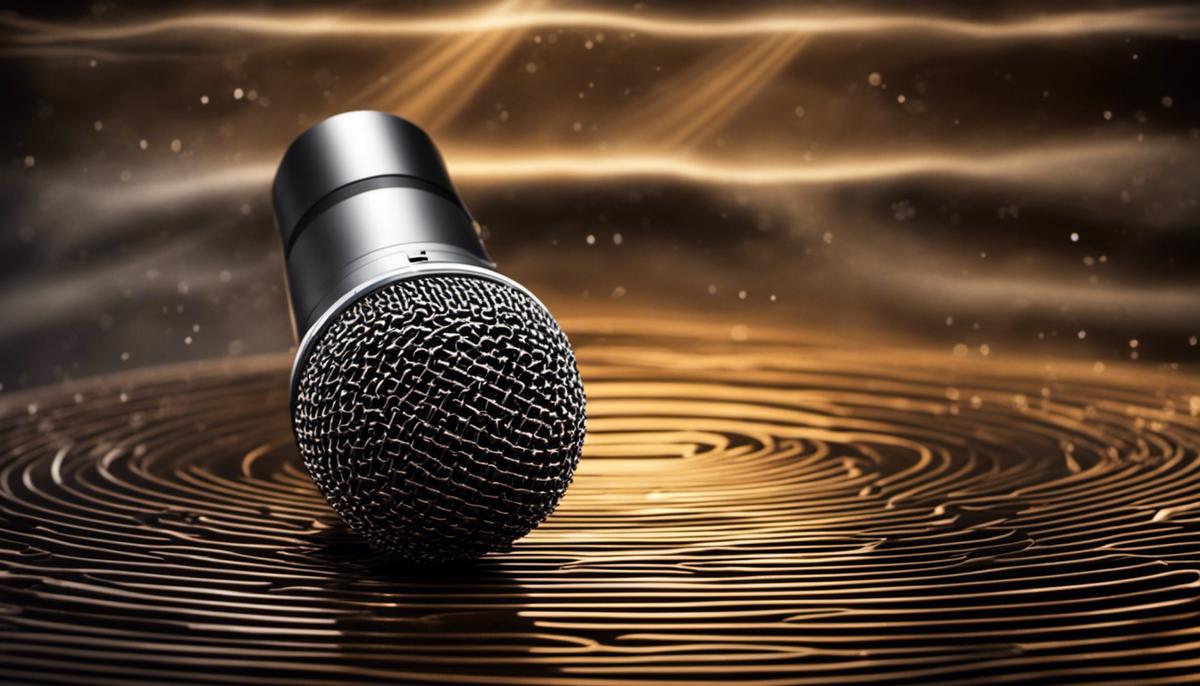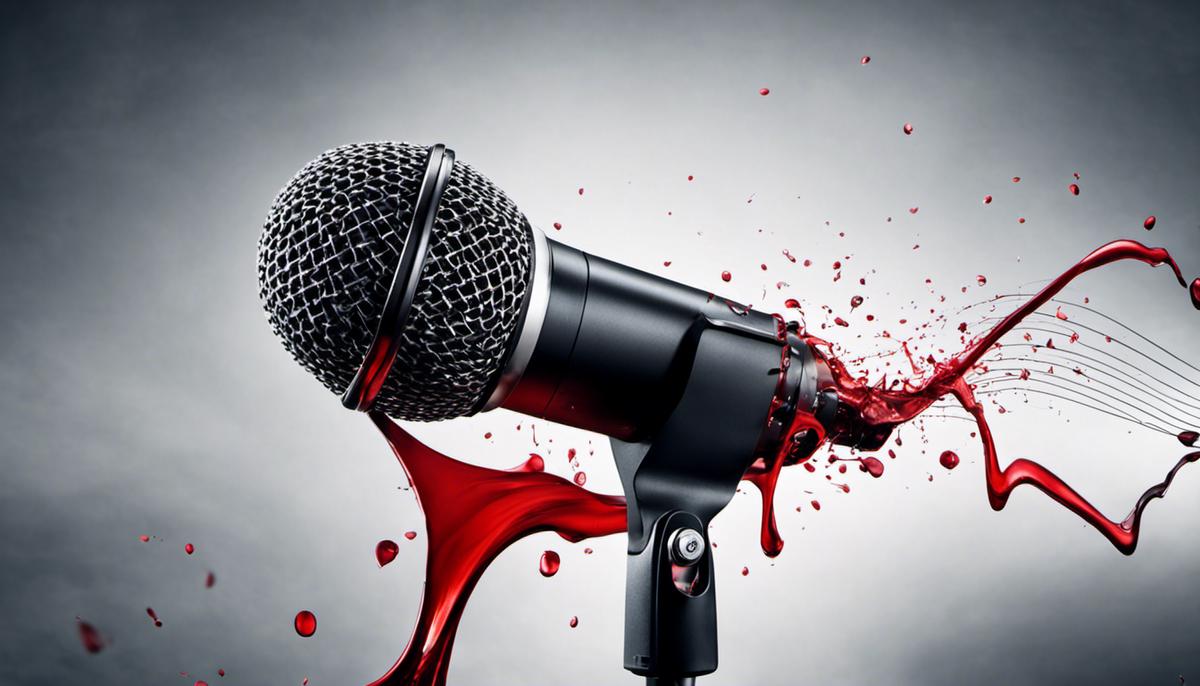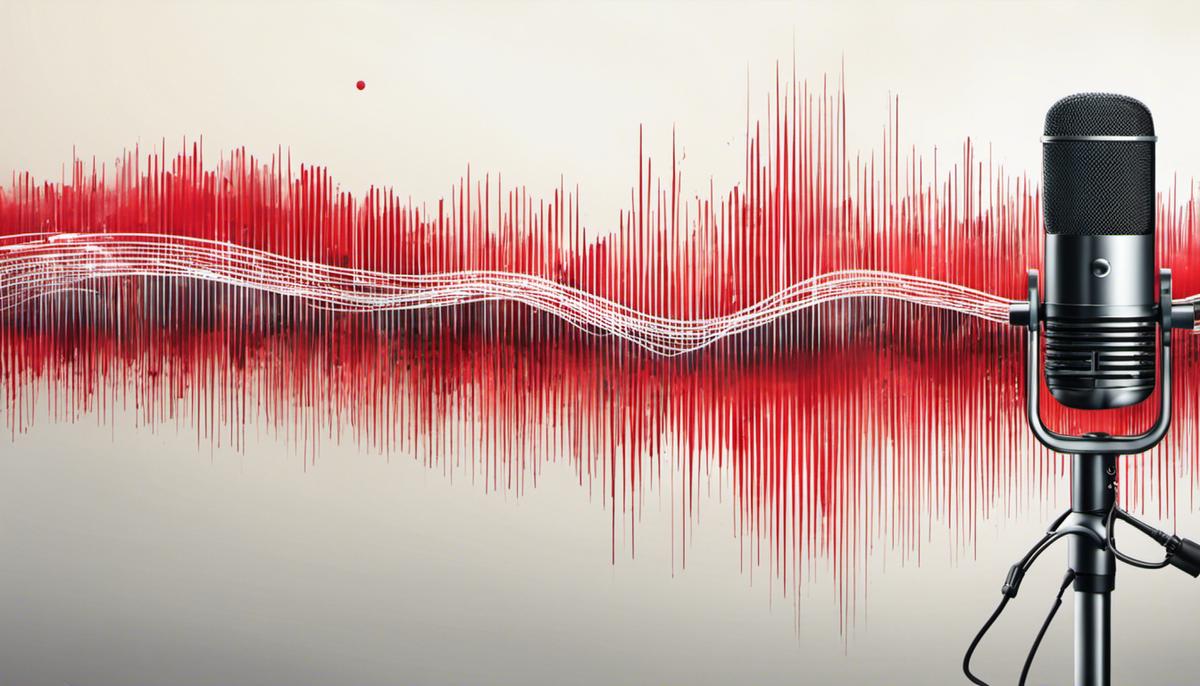In the realm of sound recording and music production, the devil is often in the details. One such detail is microphone bleed—a phenomenon both loved and loathed by sound engineers and enthusiasts alike. It’s an intricate dance where sound leakage between different microphones in a recording setup can become a nemesis or an unexpected ally. Indeed, mastering the concept, causes, and control of microphone bleed can shape the quality of a recording significantly. From explaining the technicalities to exploring its implications, from discussing ways to minimize bleed to post-production adjustments; let’s delve into the subtle world of microphone bleed and demystify its workings.
Understanding Microphone Bleed
On the pulsating heart of musical creation, amidst the enchantingly resonating symphonies of sound, there exists the less-noted, less-romanticized but utterly integral player: the almighty microphone. Yet, like any performance, be it a poignant indie ballad or an electrifying rock anthem, there exists a hidden nemesis, an unseen hiccup in the otherwise immaculate symphony of sound. This culprit, often just as omnipresent as the microphone itself, is the phenomenon known as microphone bleed.
Ornamented with numerous pseudonyms – leakage, spill, or crosstalk – microphone bleed refers to the unwelcome intrusion of unintended, external sounds that barge into your audio recording. It’s like those uninvited guests at every concert who decide to engage in the loudest conversation, just when the most soulful guitar solo ensues.
Microphone bleed happens when reflections from various instruments or voices meet in the live room and swirl into the microphone, even when it is tuned to record a specific instrument or voice. Imagine Bob Dylan’s harmonica subtly sneaking into The Beatles’ ‘Twist and Shout’ or a surreptitious smattering of Aretha Franklin’s soulful vocals punctuating The Rolling Stones’ ‘Paint it, Black’. While these examples are purely fictional, they articulate the surreptitious incursion microphone bleed causes in an audio recording.
At the heart of this phenomenon lies the acoustic quirkiness of the live room. These uninvited sounds are largely determined by the physical environment around the microphone. Unwanted external noises, echoic feedback, and overwhelming reverberations can all contribute to microphone bleed. Microphone bleed, thus, is almost as versatile and complex as the very genres of music themselves – much like jazz can be smooth or discordant, folk can be ethereal or gritty, so too can microphone bleed morph from slight, inconspicuous whispers to deafening, intrusive noises.
The proximity, orientation, and type of microphone also play substantial roles in determining the stealth and severity of this audio avalanche. No two microphones are created equal, and thus they each bleed differently – a hauntingly beautiful expression of their unique sensitivity to the world of sound around them. A directional microphone, for example, is less susceptible to bleed compared to its omnidirectional or bidirectional counterparts, tracing back to the differences in each one’s sensitivity to sounds from various directions.
Knowing microphone bleed is not a plea to despise it; like any unwelcome guest, sometimes they bring unexpected joy to the party. At times, a hint of bleed can infuse life into an otherwise sterile recording syncopating rhythm and harmony in a way planned articulation might fail to accomplish. Savvy musicians steer bleed, turning its unwelcome presence into an unexpected harmonious blend, rendering a testament to the unending creativity and resilience in the face of the unusual sonic intrusions that music embodies.
Understanding microphone bleed is to unfurl another layer of the complexities inherent in the creation of music. It is delving into the crucial mechanics behind the magic, enhancing not just the musical ear but the heart that rhythmically beats to the euphonic symphony of music’s incessant evolution. Microphone bleed, then, stands not just as an audio phenomenon but rather an emblem of the constant dialectic between creativity and adversity that nestles in the very soul of musical creation.

Assessing the Consequences of Microphone Bleed
Riding the sonic waves of the music universe, when one speaks of microphone bleed, a diverse range of reactions emerge. However, no passionate music lover or artist can deny the profoundly nuanced impact it has on the music we love.
Microphone bleed, although commonly looked upon as a blemish on the pristine body of audio production, carries with it an unconventional charm. It’s akin to the inadvertent smudge on an artist’s canvas – an imperfection that adds a touch of candid realism to an otherwise meticulously rendered façade.
Particularly in the realm of live music and festival sets, an environment we often find ourselves entranced by, microphone bleed can be an unsung hero. It is the shadowy accomplice granting us the unadulterated rawness and lifelike resonance of our favorite bands and artists. Like the ephemeral echoes soaring through the concert hall or the jubilant stir of crowd murmurs, microphone bleed mirrors these sonic specters to recreate the very fabric of a live music experience.
Diving deeper into the labyrinth of microphone bleed, one may ponder, is it possible to harness this phantom of sound? The answer lies in the strategy pursued by skilled audio professionals. By judiciously controlling the level of bleed and the path it takes, these sonic architects coherently blend individual elements, carving a unified soundscape. A reminiscent manifestation of this is the “room sound”, where the character of a space breathes life into a recording, mirroring the live experience for the listeners at home.
Furthermore, the field of acoustic music, with its intimacy and organic warmth, often relies on the controlled transgression of bleed. The interplay of instrument tones, the delicate hum of strings, all become a part of the greater auditory picture thanks to microphone bleed. What would a folk ensemble be without the shared essence of sounds merging, interpenetrating, participating in an intricate dance?
But in truth, it’s not just the acoustic or live music genres that can benefit from this intricacy. Drums, for instance, are a shining testament within electronic music genres, embracing the bleed between the different percussive elements for a cohesive, authentic sound.
The sophistication of microphone bleed encourages us to step beyond the confines of our previous understanding and embrace the symphony of sounds coloring our auditory world. Embracing the bleed is a testament to a true music lover’s quest for authenticity and depth. It compels us to widen our sonic panorama, unmask the binary of perfection and imperfection, and relish the harmony of their co-existence.
Hence, as we tread the vast cosmos of music, let’s remember – not every echo is meant to fade away into the void, and not every bleed is meant to be cured. For sometimes, in these overlooked spaces, the soul of music finds its potency and its truth. Music, after all, is a grand tapestry, and even the tiniest thread contributes to the majestic design. And isn’t that, dear connoisseur, what makes our beloved art form so breathtakingly beautiful?

Microphone Techniques And Gear to Minimize Bleed
Approaches to curb microphone bleed: Exploring techniques and gears
The crucial equilibrium of controlling microphone bleed is akin to choreographing a ballet of harmonious elements. It’s all about precision, finesse, and a keen understanding of the dance between sound and silence. Now that we have cast light on the whys and wherefores of microphone bleed, let’s delve into the influx of tactics used to control, or rather, to orchestrate it.
The mic technique plays a pivotal role in influencing bleed. The use of Cardio-Pattern Microphones, known for their heart-shaped polar pattern, can minimise undesired background noise and leakage. Positioning these microphones in a way that the back, which has the least sensitivity, faces the unwanted sources can be a game-changer.
Another pivotal player in this realm is the gooseneck microphone, a virtuoso at discriminating between the absence and presence of sound, ideal for musicians hunting down precision. Coupling it with windshields can drastically reduce unwanted noise caused by wind, breath, and pop noises, thereby reducing unanticipated bleed.
The use of Portable Isolation Booths has been heralded as a revelation within the music circles. This gear can isolate the microphone from the ambiance, ensuring only the sound projected directly onto the microphone gets captured.
Moving onto the tantalizing realm of production techniques, High-Pass Filters, or HPF, can effectively control microphone bleed. By filtering out frequencies below a certain threshold, these devices can drastically reduce the impact of bleed on the recording.
Similarly, proper use of compressor can also play a part in curbing the bleed. It can reduce the range of an audio signal by attenuating the output above a certain threshold, thereby reducing the impact of external bleed.
The art of managing microphone bleed straddles understanding the science of acoustics and the spirit of music creation. As we juggle different microphones, master the potential of gears and finesse production techniques, it starts to become clear that this isn’t just about blocking unwanted noise. This is about cultivating a sonic landscape, where microphone bleed becomes less of an intruder and more of a furtive component, inconspicuously contributing to the beautiful chaos that defines music.
Through this labyrinth of techniques and gears, what emerges is not a sterile, controlled environment, but a soundscape filled with real, organic vibrancy tuned to the rhythm of authenticity. Each approach mentioned isn’t an end unto itself, but a gateway, a way to shape the unsculpted sound, a way to paint the canvas of silence with a symphony of color. While microphone bleed might seem like a nemesis to be vanquished, it might just be a misunderstood ally, a part of the very fabric of the eclectic and wonderfully chaotic world of music recording.

Post-Production: Tweaking Microphone Bleed
Unveiling the Art of Audio Engineering: Mitigating Microphone Bleed in Post-production
While microphone bleed, also known as spill or leakage, is often perceived as a challenge to quality sound recording, it also presents an opportunity for creative expression when harnessed and manipulated correctly. Conversion of this phantom force into an ally heavily depends on the prowess of a sound engineer. Let’s dive into how these audio wizards can master the art of dealing with microphone bleed in post-production.
Nothing screams precision in audio engineering louder than the use of Cardio-Pattern Microphones. These devices are known for their sensitivity being more concentrated towards the source of sound and less towards the sides or rear. Understanding the directional characteristics of these microphones can drastically reduce unwanted bleed.
Akin to the Cardio-Pattern microphones are Gooseneck Microphones, with their bendable features enabling the engineer to aim it toward the sound source. It reinforces precision and demonstrates how the art of sound lies in mastering even the most minuscule aspects of recording.
Defending the mix from environmental sounds like wind, breath pops, or even noisy sibilance is a craft in its own right. Utilizing windshields is a staple in this practice as they form a protective layer around the microphone, sparing your soundscapes from unwanted random sound intrusions.
Where windshields form a protective layer, Portable Isolation Booths build an entire fortress. They provide a small, contained environment that cuts off most of the surrounding ambient noise, thus significantly minimizing bleed.
In the digital post-production process, High-Pass Filters (HPF) prove to be a potent ally. They allow frequencies higher than a certain threshold to pass while reducing the lower ones, hence mitigating the bleed from bass-heavy elements.
Another tool within the post-production spectacle is the use of Compressors. These devices help manage the dynamics of the sound, taming those striking peaks that might cause unnecessary bleed through slight volume adjustments.
Understanding the science of acoustics and music creation is the bedrock for effective sound engineering. Acknowledging how sound waves interact with the environment and one another can lead to the creation of a fortified strategy to combat bleed.
Just like a painter wields different brushes to paint their masterpiece, a sound engineer must acquaint themselves with different microphones and mastering gear. Different mics have different propensities to pick up sound from various directions, and getting a hold of this knowledge is instrumental in tackling bleed.
Finesse in production techniques is where the marriage of science and art comes into the forefront. Creative positioning of instruments, thoughtful microphone placement, and crafty utilization of the recording space are few of the numerous techniques that can curb microphone bleed.
Shaping the sound and creating a sonic landscape not only brings forth the musical vision into reality but helps in managing the bleed as well. Strategic panning and equalization can create an engaging stereo image while keeping spill at bay.
Microphone bleed can be seen as a furtive component in music recording, impacting the recording subtly but surely. Recognizing its presence and potential influence is the first step toward either diminishing its impact or molding it into a contribution to the artistic vision.
Let the misunderstood ally in the world of music recording, the microphone bleed serve as a testament to the inventiveness of sound engineers. Navigating through the bleed can sometimes unleash new shades of creativity, providing a fuller, more naturalistic sound to the recording. Embrace it more fruitfully, and you might just be creating symphonies that sing not only to the ears but to the soul.

Undeniably, the world of sound recording is riveting, full of technical nuances and creative possibilities. The intricate journey of understanding and controlling microphone bleed guides us through it. It is these finer subtleties that can give a piece of music its unique identity; be it the raw, live textures that bleed imparts, or the clean and crisp sound achieved by minimizing it. Adequate knowledge of post-production tools and tweaks equips one to refine an audio track, often being able to make a significant difference even after recording. Thus, a mindful and informed approach towards microphone bleed can indeed be the distinguishing factor between an ordinary and an extraordinary sound recording.

Comments.
Currently there are no comments related to this article. You have a special honor to be the first commenter. Thanks!